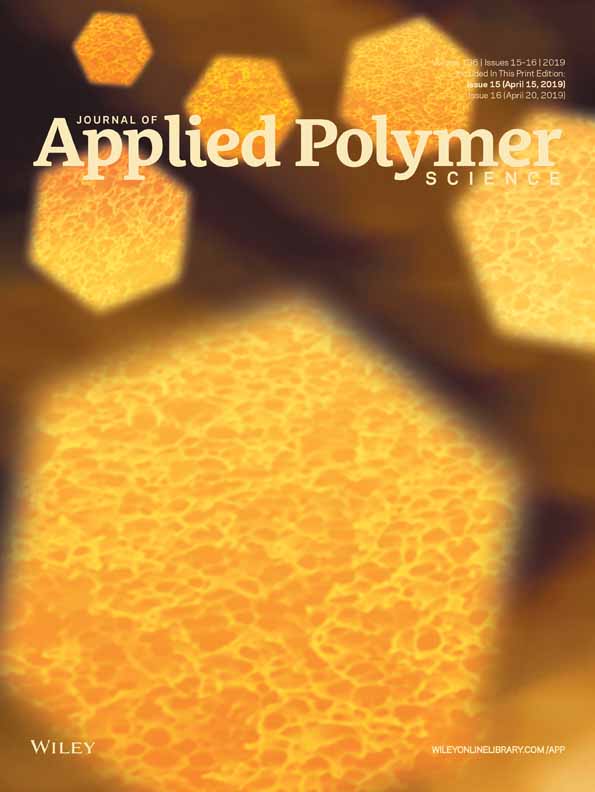Mechanical, thermal, morphological, and curing properties of geopolymer filled natural rubber composites
ABSTRACT
The main objective of this work was to investigate influence of natural rubber (NR) types on mechanical, thermal, morphological, and curing properties together with relaxation behavior of geopolymer filled NR composites with and without bis(triethoxysilylpropyl) tetrasulfide (TESPT) silane coupling agent. Three alternative types of NR: unmodified NR, and epoxidized NR with 25 (ENR-25) or 50 mol % epoxide (ENR-50) were exploited. Rubber compounds filled with GP particles were prepared in an internal mixer at 60 °C and 130–150 °C for the ones with and without TESPT, respectively. It was found that incorporation of GP significantly affected cure characteristics and mechanical properties of the rubber composites. That is, decreasing cure time was observed from 11.6, 3.2, and 7.0 min in gum NR, ENR-25, and ENR-50 to 6.9, 2.1, and 5.0 min in NR/GP, ENR-25/GP, and ENR-50/GP compounds, respectively. Furthermore, the ENR-25/GP and ENR-50/GP composites showed finely dispersed GP particles which indicate high filler–rubber interactions. The in situ silanization with TESPT in rubber composites enhanced the mechanical properties of NR/GP and ENR-25/GP composites but no such enhancement was found in the ENR-50/GP composite. This matched the observations of Payne effect, maximum tan δ, and stress relaxation properties of the composites. We found that the ENR-25/GP composites exhibited the best overall properties. © 2018 Wiley Periodicals, Inc. J. Appl. Polym. Sci. 2019, 136, 47346.




